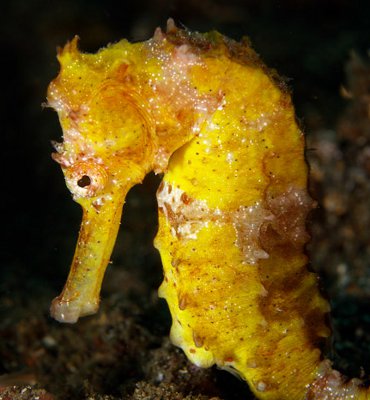Common Seahorse
Category: Salt Water

Facts about Common Seahorse, "Scientific name for Common Seahorse is Hippocampus kuda" The Common Seahorse is also called Hippocampus kuda. A clear description of this species is not very easy to make since there are so many sub species of the same. The Common Seahorses come in different colors though they are always able to blend with the natural surroundings. The Facts about Common Seahorse species is the smallest of all seahorse species the world over.
The Common Seahorse is beautiful when kept in aquariums but it is not easy to keep it in captivity. The Common Seahorses get much stressed when denied freedom and the bacteria in water is not friendly to them. Before embarking on keeping them in aquariums; it is wise to have them fully trained.
The male Common Seahorse has a shade of gray as its base color and it’s got large dark spots. The female Common Seahorse on the other hand has smaller dark spots throughout the body and the color yellow.
You will commonly find the Common Seahorse along the coral reef areas where they lock onto the reefs using their tails. This way they can survive the strong current surrounding them. The Common Seahorse is not a good swimmer and has to struggle to keep its body afloat in water.
The Common Seahorse lives in Australia and some parts of Indonesia. It prefers living in warm places in the tropical and mostly on water bodies that have seawater.
The diet of the Common Seahorses is mainly determined by the place where they live. Most of the diet however consists of small Brine Shrimp and small guppies. They have no teeth and so they just swallow their food.
The Common Seahorse spends most of its time eating or resting. They also have no digestive system and they eat very slowly.
The female Common Seahorse engages in mating with its favorite male and after laying eggs; she deposits them into a pouch found in the abdomen of the male Common Seahorse that incubates them for 4 to 5 weeks till they hatch. The male Common Seahorse is the one that will carry the eggs. He will have them in his body until they will emerge full grown.
The young Common Seahorses take care of themselves once they are hatched.
The eyes of the Common Seahorse are able to move independently of each other.
The Common Seahorse doesn’t have teeth and they don’t have a stomach. They have to constantly eat because of the fast process of their digestion.

 Back To Category Salt Water
Back To Category Salt Water